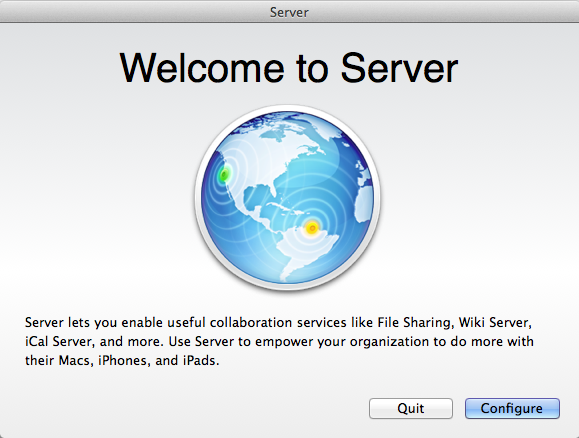Mac OS X Server costs 5% of what it cost just three years ago. Whatever your needs and whatever the software’s shortcomings, this is hard to ignore. Leopard Server cost $999 for an unlimited-client license, Snow Leopard Server cost $499, and Lion Server costs $50.
For this reason alone, Lion Server will (and should) attract the attention of people who have never been in the market for server software before - home users, in particular - but it has to do so without alienating the business and education customers who currently rely on the software. These are Lion Server’s challenges: is there a real point in having it at home? And as a comparatively-dirt-cheap App Store download, is it lacking in features and power compared to previous versions?

I want to clarify a couple of things before I dive into the review proper: First, just like previous versions, Lion Server is very much just OS X with server functionality laid over top of it. In appearance, performance, system requirements, and operation, it is mostly identical to OS X client. I’ll point you to our massive review of Lion if you need to know more about any of that.
Second, know that I’m approaching this review from a different angle than the Lion client review - while most people interested in an OS X review have at least a passing familiarity with the software, this review will be the first exposure to OS X Server for many of you. For that reason, among the descriptions of Lion Server’s features and comparisons with past versions of the software, I’m going to be going a little more in-depth about how to actually configure the services. Hopefully the newbies among you can use these instructions as jumping-off points as you explore the software on your own.
Last, OS X Server can do a lot of things - some (like mail and DHCP) can be handled by many different products, but others (like Open Directory, NetBoot, or the OS X and iOS management features) are pretty unique to OS X Server. I’m going to try to at least touch upon every single service and tool in OS X Server, but I’ll generally focus more on the unique stuff for the purposes of this review.
Got all that? Good! Let’s jump in.
more...
For this reason alone, Lion Server will (and should) attract the attention of people who have never been in the market for server software before - home users, in particular - but it has to do so without alienating the business and education customers who currently rely on the software. These are Lion Server’s challenges: is there a real point in having it at home? And as a comparatively-dirt-cheap App Store download, is it lacking in features and power compared to previous versions?

I want to clarify a couple of things before I dive into the review proper: First, just like previous versions, Lion Server is very much just OS X with server functionality laid over top of it. In appearance, performance, system requirements, and operation, it is mostly identical to OS X client. I’ll point you to our massive review of Lion if you need to know more about any of that.
Second, know that I’m approaching this review from a different angle than the Lion client review - while most people interested in an OS X review have at least a passing familiarity with the software, this review will be the first exposure to OS X Server for many of you. For that reason, among the descriptions of Lion Server’s features and comparisons with past versions of the software, I’m going to be going a little more in-depth about how to actually configure the services. Hopefully the newbies among you can use these instructions as jumping-off points as you explore the software on your own.
Last, OS X Server can do a lot of things - some (like mail and DHCP) can be handled by many different products, but others (like Open Directory, NetBoot, or the OS X and iOS management features) are pretty unique to OS X Server. I’m going to try to at least touch upon every single service and tool in OS X Server, but I’ll generally focus more on the unique stuff for the purposes of this review.
Got all that? Good! Let’s jump in.
more...
